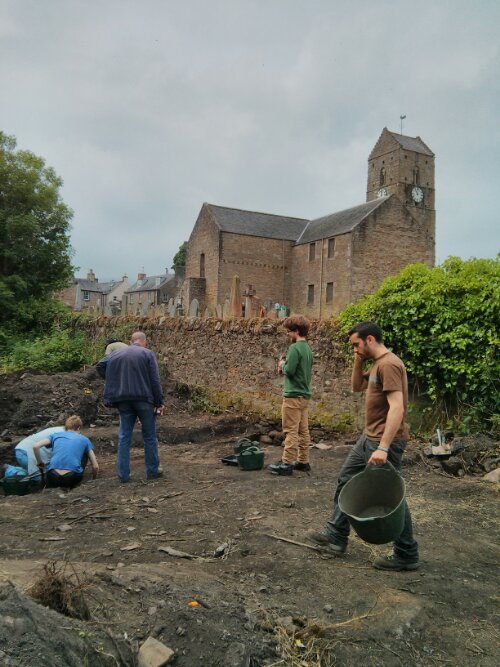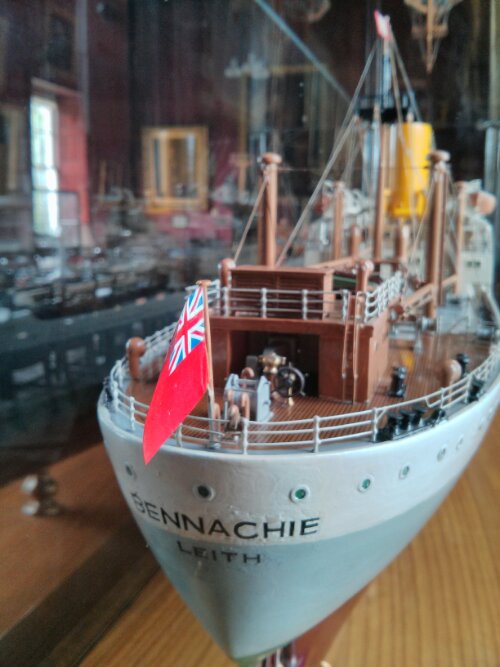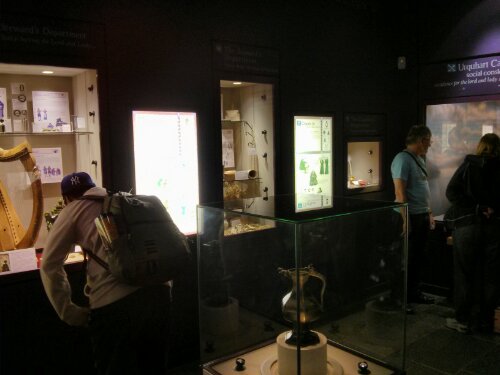Some of the stone in this chapel is being damaged by the wrong environmental conditions. Survey work is pretty much complete -this is a site meeting to agree a way forward
Energy Savings
Reducing energy use while at the same time improving conditions for both building and collection should be possible. It gets complicated though when the building is part 16th century, it’s packed with valuable objects, sees thousands of visitors a year and is used for functions, offices and apartments too. One starting point is to gather information on current environmental conditions so that’s what I’m doing here.
Woodworm?
There was a concern that Woodworm had got into a 17th century painted ceiling here at Aberdour Castle. Insect pest monitoring confirmed that this was not the case as the woodworm would have flown by now and would have been caught on the window cill sticky traps. The photo shows slaters, silverfish, spiders and even a couple of clothes moths on the blunder trap
-but no woodworm.
Medieval Archaeology at St. Serfs
Scottish Wall Paintings
Trinity House of Leith
This museum has a conservation heating system that needs checking on every couple of months. It’s quite a new system and we’re working through some issues with set points, flat batteries and expectations of how warm the building needs to be in the winter. We are also starting to control light levels through better use of blinds and light meters.
Dry Rot Outbreak
A leaking downpipe has caused a dry rot outbreak. The science of this (and more importantly how to deal with it) is the same as the science of collections care. The pipe is already repaired so the next job is to remove the fungus and affected wood, plaster and deafening. We may need to reinforce the part-digested joists and will certainly need the services of a plasterer once a dehumidifier has dried the area out fully. As usual it’s about controlling relative humidity, in this case reducing it to a point where the dry rot fungus can’t survive.
Urquhart Castle
The collection of archaeological objects and models needs continual monitoring of temperature and relative humidity. The display case lighting has recently been changed to LED to both save energy and reduce heat build up. This seems to be working as intended after some initial design issues with light fittings and colour temperatures
The Seafield Enclosure, Fort George
I installed a new Meaco conservation heating system here for Historic Scotland a year or so ago. After a few visits and tweaks to setpoints it is providing perfect conditions for the collection of rifles and military equipment – some of which was probably used at nearby Culloden battlefield. The collection needs regular visits to check the environmental monitoring system.
Continue reading










